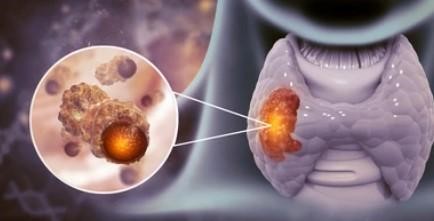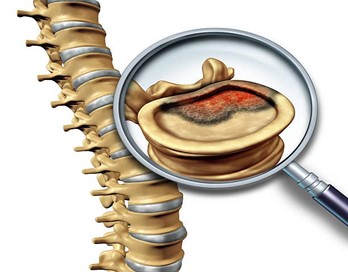Are you aware of the complexities surrounding thyroid cancer?
The global incidence of thyroid cancer is increasing, with over 567,000 new cases reported annually. As for thyroid cancer metastasis to bone, it represents the second most frequent site of systemic spread after the lungs. The incidence ranges from 2% to 15% of all thyroid cancer types combined.
The 10 year survival rates of patients with thyroid cancer with spread to bone is 70% for thyroid carcinoma which are excellent when compared to other cancers. Follicular cancer is more likely to spread to bones than papillary thyroid cancer.
In this blog, we’ll unravel the intricacies of thyroid cancer metastasis to bone. We will explore its symptoms and treatment options.
Understanding Thyroid Cancer

Thyroid cancer, although relatively rare, can have a significant impact on individuals and their families. It starts in the thyroid gland, which resides in the neck. The thyroid gland produces hormones that regulate metabolism, growth, and energy levels in the body. When cells in the thyroid gland begin to grow uncontrollably, they can form a tumor and potentially spread to other parts of the body.
“Thyroid cancer can often be treated successfully” says Dr. Sandeep Nayak. Dr. Nayak is a surgical oncologist in India who is deeply committed to patient care and treatment.
Thyroid cancer treatment depends on the type and stage of the cancer. In some cases, thyroid cancer metastasizes, meaning it spreads beyond the thyroid gland. It can affect other body parts, including the bones, a condition known as bone metastasis.
Bone Metastasis
Bone metastasis means that cancer cells have traveled from the original tumor site to the bones. Bones are the second most common location for thyroid cancer to spread after the lungs. As mentioned earlier, they occur in approximately 2% to 15% of all types of thyroid cancer combined.
Understanding the process of bone metastasis is crucial for developing effective treatment strategies. Thyroid cancer metastasis to bone is a complex process involving multiple steps:

Local Invasion:
Thyroid cancer cells break away and invade nearby tissues, including blood vessels or lymphatic vessels.

Transportation:
They travel through the bloodstream or lymphatic system to reach distant organs and tissues, including bones.
Proliferation:
Cancer cells multiply and form metastatic tumors within the bone tissue. These tumors weaken the bone structure and may lead to symptoms such as pain, fractures, and other complications.

Adhesion:
The cancer cells adhere to the bones’ inner lining of blood vessels. They may also release signaling molecules that attract them to specific sites within the bone tissue.

Invasion:
Cancer cells infiltrate the bone tissue, disrupting the bone architecture and function. They may additionally stimulate the production of osteoclasts. Osteoclasts are cells responsible for bone resorption. Bone resorption refers to the body absorbing and breaking down bone tissue, leading to bone destruction.
Interaction with Bone Microenvironment:
Cancer cells interact with various components of the bone microenvironment, including:
Bone cells (osteoblasts and osteoclasts)
Immune cells
Extracellular matrix
These interactions promote tumor growth and resistance to treatment.
How will you know if you have bone metastasis? Let’s dive into the symptoms of bone metastasis to uncover the clues your body might be sending.
Symptoms Of Bone Metastasis
In addition to bone pain and fractures, thyroid cancer metastasis to bone can cause various other symptoms, including:
Difficulty walking or moving due to bone weakness or instability.
Swelling or deformities in the affected bones.
Numbness or tingling sensations in the limbs.
Limited range of motion in the joints near the affected bones.
Fatigue or weakness due to the body’s response to cancer spread.

Increased risk of developing secondary infections in weakened bones.
Compression of nearby nerves or blood vessels, leading to neurological symptoms.
Changes in posture or stature due to bone deformities or spinal involvement.
These symptoms can significantly impact a patient’s quality of life.
Next, let’s look at the array of effective strategies employed in treating bone metastasis.
Treatment Approaches To Bone Metastasis
Treating bone metastasis involves several approaches. The doctor carefully tailors each approach to enhance patient outcomes and restore vitality.
Surgery:
Main treatment is total thyroidectomy which may include removal of the involved bone during same surgery. Surgical intervention aims to remove as much of the tumor as possible. It may involve procedures like tumor resection or bone stabilization. Surgery can help alleviate symptoms, reduce the risk of fractures, and improve bone health.

Radio-Iodine therapy:
Thyroid absorbs iodine and for this reason iodine is converted to radioactive iodine (I131) which accumulates in thyroid cancer and destroys it.
Radiation therapy:
Radiation targets and destroys cancer cells in the bones. It may involve external beam radiation or internal radiation therapy (brachytherapy). Radiation can relieve pain, shrink tumors, and prevent further spread of cancer to surrounding tissues.

Suppressive Dose of Thyroxine:
The thyroid hormone works as a good anticancer medication on thyroid cancer. It can suppress and control the cancer when it is given in high dose.
Systemic therapy:
Targeted therapy focuses on specific molecular targets involved in cancer growth and progression.
Doctors often use these treatments when bone metastasis is widespread or has spread to other organs. Otherwise, there is very limited role for systemic therapy.

Bisphosphonates and denosumab:
These medications help strengthen bones and reduce the risk of fractures by inhibiting bone breakdown. Doctors often use them in combination with other treatments to manage bone metastasis-related complications.

Pain management:
Managing pain with pain medications, physical therapy, and nerve blocks is essential for improving patients’ quality of life. Complementary therapies like acupuncture or massage can provide further relief and enhance well-being.

What Is the Survival Rate for Bone Metastasis Of Thyroid Cancer?
The survival rate for bone metastasis varies depending on several factors, including:
the stage of the cancer (it can either be stage 2 or stage 4 based on age of the patient)
the overall health of the patient
the extent of metastasis
Generally, the prognosis may be less favorable compared to localized thyroid cancer. The median overall survival after bone metastasis detection is around four years or more. However, with advancements in treatment options and personalized care, many patients can achieve improved quality of life and extended survival.
Patients need to work closely with their healthcare team. They must explore all available treatment options and strategies to optimize prognosis and well-being.
Conclusion
In conclusion, bone metastasis of thyroid cancer is a severe complication. It is a condition that can significantly impact a patient’s quality of life. Recognizing the symptoms early, such as unexplained bone pain and fractures, is crucial for timely intervention. Management options include surgery, radiation therapy, and targeted therapies. These treatment modalities aim to alleviate symptoms and improve patient outcomes.

The prognosis for patients with bone metastasis may vary and may not be very favorable. But, advancements in medical science offer hope for improved outcomes and enhanced quality of life. With access to timely and specialized care, patients can navigate their journey with confidence and resilience.
A patient with thyroid cancer with bone metastasis is better treated under an expert. It requires intricate planning and execution.
Our FAQ section addresses some common concerns related to bone metastasis from thyroid cancer.
FAQ
How is bone metastasis from thyroid cancer diagnosed?
Medical experts diagnose bone metastasis from thyroid cancer through imaging tests such as:
- Bone scans
- CT scans
- MRI scans
These tests help detect any bone abnormalities or lesions that may indicate metastasis. They may also perform a biopsy of the affected bone to confirm the presence of cancer cells.
Can metastatic thyroid cancer be cured?
Metastatic thyroid cancer can be cured in selected cases or you can often manage it effectively with treatment. The goal of treatment is to:
- Cure in selected cases
- control the spread of cancer
- relieve symptoms
- improve quality of life
Treatment options may include surgery, radioactive iodine therapy, targeted therapy, or palliative care.
What TSH level indicates cancer?
There is no specific TSH (thyroid-stimulating hormone) level that definitively indicates cancer. However, elevated levels of TSH may indicate an underactive thyroid gland (hypothyroidism). It can be a risk factor for thyroid cancer. Please consult a thyroid specialist for proper evaluation and interpretation of thyroid function tests.
How long can someone live with cancer in the bones?
The prognosis for someone with cancer in the bones depends on various factors such as:
- the type and stage of cancer
- the overall health of the individual
- response to treatment

